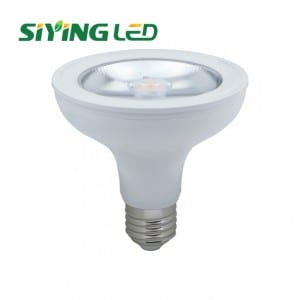However, the market for LED retrofits promises to outpace new construction for some time to come, especially when you consider that only 8% of commercial building capacity is built as new each year, and more than half of all commercial buildings still in use are more than 60 years old. Since physically wiring together a lighting infrastructure is impractical, wireless communications are proving to be a much more viable option.
Emergency luminaires are required in all commercial structures, and they have to be strategically placed to cover the entire building (Fig. 1). Emergency lights are already linked to building alarm systems so those “bug-eye” lights can show the way to the nearest exit in the event of an emergency or power outage. Now what if you were to use those same emergency luminaires to create a wireless network capable of automating building safety systems? That same infrastructure can then be readily extended to manage a wide range of building systems.
Despite clear benefits, including a proven ROI and short payback, high-intensity discharge (HID) technologies like high-pressure sodium (HPS) and other conventional lighting sources remain fully entrenched. With some 144 million lights in place at 455,000 industrial facilities in the U.S. alone, HID sources still represent nearly 92 percent of all installed lighting.
Retrofitting takes 15 minutes, thanks to an almost tool-less installation process. Adjustable height levels allow contractors to position the light engine for maximum performance. Quick install times provide reduced labor costs in addition to the substantial savings from its energy efficiency. In addition, Avista offers cutting-edge optics and extraordinary output with a completely sealed LED optical chamber. The product ships in 10 days.

In a mesh configuration, Bluetooth devices are commonly referred to as nodes. You add nodes to the mesh using provisioning, which is a secure process where you use a device, such as a smartphone, to issue security keys to add the device to the network. Once provisioned, the nodes are given state values that show their condition and are shared with the network. States could simply indicate on/off, or they can indicate a value such as 50% brightness. State values can be issued as changes through sent messages or they can be queried by other nodes.
Seoul’s Acrich NanoDriver Series devices, made with this patented technology, was named as a winner in the Sapphire Award category “ICs & Electronic Components for Solid State Lighting.” By virtue of its continuous technology innovations, Seoul owns over 250 patents concerning LED driver technology around the world.
Point being that in order to light up a _room_ you want the light onto the walls and ceiling as well to create diffuse light that doesn’t cast shadows. Ambient light makes the room bright. Pointing most of the light directly down to appease a luxmeter is cheating.
One of the challenges is also the advantage, the unusual production method. The unique press porcelain technique allows fine precision details, alongside outstanding durability and insulation - characteristics perfectly suited for electro technical products. The technique requires great knowledge throughout all stages: construction, tooling and production - all phases are performed by skilled craftsmen. The fine tuning before starting the press is mandatory - like an orchestra tuning their instruments before a concert, the toolmaker goes over and puts together the press tool parts.

“Incandescent lamps are manufactured according to British Standard BS 161 (IEC 60064), and the committee responsible for this includes representatives from a wide cross-section of interests such as government departments, professional institutions, organisations representing large users, electrical contractors and the lighting industry. They review all the factors involved such as lamp cost, electricity cost, cost of replacing a lamp, lamp efficiencies at different rated lives etc. and on each occasion they have concluded that the long established life of 1000 hours should remain the standard rating. In fact to minimise customer complaints, the standard filament with a declared life of 1000 hours typically has an average design life of 1200 hours.” http://lamptech.co.uk/Documents/IN%20Life.htm
The escalator tunnels will be illuminated with Future Designs’ Plinth luminaires, which are located within the deck area between escalators. The LEDs are at a low level in the uplighter fixtures, behind a black louvre which prevents passengers looking directly at the very bright light sources and reduces glare to ensure that faces can be clearly seen on CCTV images. The lights will be close to passengers using the escalators, and so the panels are required to withstand a 1 000 N load applied over a 50 mm x 50 mm area.
Three keyholes on the base let you hang it horizontally or vertically against a wall or beam. That will take care of most of your needs, but it does lack the combination of pivoting and swiveling to cover a diagonal from its hanging position.
It should be noted the nice thing about the “1-10V” sink analog systems is that you can dim them with a simple potentiometer. Though you may still have to have an ‘off’ switch if the driver won’t dim all the way down to zero, but you can buy standard decora mount ‘dimmers’ with that both built in.
Warren Buffett and Charlie Munger on Berkshire Hathaway succession plans [Video] | Intelligent Control Led Emergency Bulb Related Video:
Gaining customer satisfaction is our company's aim forever. We will make great efforts to develop new and top-quality products, meet your special requirements and provide you with pre-sale, on-sale and after-sale services for Modern Smart Led Ceiling Light, High-Quality A60 Led Bulb, Flat Recessed Led Ceiling Lighting, Our company will continue to adhere to the " superior quality, reputable, the user first " principle wholeheartedly. We warmly welcome friends from all walks of life to visit and give guidance, work together and create a brilliant future!
